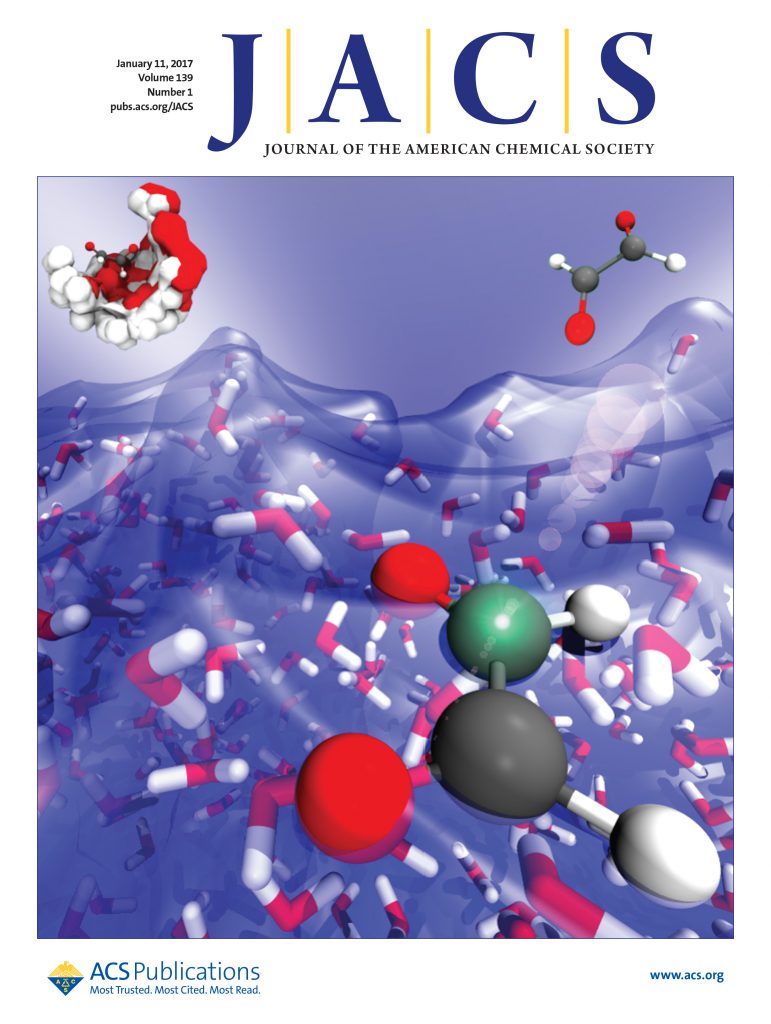Synergistic Catalysis by Cu Single Atoms and Atomically Cu-Doped Au Nanoparticles in a Metal–Organic Framework for Photocatalytic CO2 Reduction to C2H6
IF 15.6
1区 化学
Q1 CHEMISTRY, MULTIDISCIPLINARY
引用次数: 0
Abstract
Photocatalytic CO2 reduction to C2 hydrocarbons is considered more valuable and yet highly challenging due to the multielectron process and sluggish kinetics of C–C coupling, which requires multiple active sites to work synergistically. In this work, through a photodeposition method, Cu single-atom sites and atomically Cu-doped Au nanoparticles were simultaneously anchored on a photoactive metal–organic framework (MOF) with mesoporous channels, closely integrating distinct sites within a confined environment. Thanks to the electron accumulation of plasmonic metal nanoparticles and the synergy among different active sites, this MOF composite can achieve efficient photocatalytic reduction of CO2 to C2H6 with a production rate as high as 69.9 μmol g–1 h–1 and a selectivity as high as 71.1%. Photocatalytic experiments with control samples unveiled the critical roles of different active sites at each step, which was further confirmed by in situ characterizations and theoretical calculations. This finding highlights the potential of MOFs as an ideal platform for the integration of various active sites for synergistically catalytic applications.金属-有机骨架中Cu单原子与Cu掺杂金纳米粒子的协同催化光催化CO2还原为C2H6
光催化CO2还原为C2碳氢化合物被认为更有价值,但由于多电子过程和C-C耦合缓慢的动力学,这需要多个活性位点协同工作,因此具有很高的挑战性。在这项工作中,通过光沉积方法,Cu单原子位点和原子Cu掺杂的Au纳米颗粒同时锚定在具有介孔通道的光活性金属有机框架(MOF)上,在受限环境中紧密结合不同的位点。由于等离子体金属纳米粒子的电子积累和不同活性位点之间的协同作用,该MOF复合材料可以实现CO2到C2H6的高效光催化还原,产率高达69.9 μmol g-1 h-1,选择性高达71.1%。对照样品的光催化实验揭示了不同活性位点在每个步骤中的关键作用,并通过原位表征和理论计算进一步证实了这一点。这一发现突出了mof作为整合各种活性位点用于协同催化应用的理想平台的潜力。
本文章由计算机程序翻译,如有差异,请以英文原文为准。
求助全文
约1分钟内获得全文
求助全文
来源期刊
CiteScore
24.40
自引率
6.00%
发文量
2398
审稿时长
1.6 months
期刊介绍:
The flagship journal of the American Chemical Society, known as the Journal of the American Chemical Society (JACS), has been a prestigious publication since its establishment in 1879. It holds a preeminent position in the field of chemistry and related interdisciplinary sciences. JACS is committed to disseminating cutting-edge research papers, covering a wide range of topics, and encompasses approximately 19,000 pages of Articles, Communications, and Perspectives annually. With a weekly publication frequency, JACS plays a vital role in advancing the field of chemistry by providing essential research.

 求助内容:
求助内容: 应助结果提醒方式:
应助结果提醒方式:


